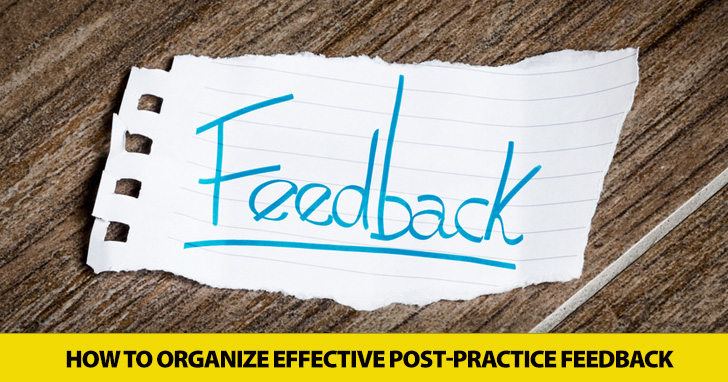Feed Me: How to Organize Effective Post-Practice Feedback


Does this sound familiar? The majority of the class responds hardly at all, leaving the high-flyers to grab the glory. This presents the teacher with a problem. Are the quiet students lost? Did they not understand the question? Perhaps they caught the question, but can’t figure out how to answer? If so, is that due to a lack of language skills, or of raw information? It’s a conundrum; their silence teaches us little about their progress.
There is a movement underway in Britain at the moment which holds that ‘hands up’ has run its course. It can be replaced – and must be, according to some leading educators – with a more balanced, ‘democratic’ system in which every student not only has the opportunity to answer, but must do so. Answers are to be drawn out of the students in a very active sense, rather than the teacher trying simply to elicit. The aim is to guarantee that every student uses the day’s target language.

It may sound drastic – even Draconian – but ‘cold calling’ is extremely effective in the language classroom. It isn’t to be used to catch students out, or punish them in some way, but instead to draw every student into the spoken language environment, irrespective of abilities or confidence level. For example, if you’re asking for feedback after an exercise, rather than ‘hands up’, try one of these questioning tactics:
Ask questions in a circle. This isn’t strictly ‘cold calling’ because the order is predictable, but the students know that everyone will get a question. You may already use this for reading aloud.
The questioned student chooses the next answerer. This is often light-hearted, as the student is knowingly putting a friend on the spot. It is also socially interesting as it can reveal sub-groups, alliances, ethnic preferences and developing friendships.
Go to the extreme left, then extreme right, then work inward until everyone has been asked. The next time, go right, then left.
If the class has (by accident or design) established distinct groups, bounce between teams when cold calling.
Choose the students who are not looking at you. Once this is routine, you’ll receive stronger eye contact, a sure sign of engagement.
Switch between cold calling and whole-class answers. Establish the basic facts through closed (yes/no) questions to the whole class, then use cold calling so that individuals bring in more detail.
Keep a checklist of who has already, and who has not yet, answered a question. This could be a column of your class list, or a section of your lesson plan.
The results have been impressive. Without the old hierarchy of ‘confident’ and ‘shy’ students, those who would normally speak very little suddenly find their amount of language production doubled. In my experience, the quietest students are those from learning backgrounds which emphasize grammar and test scores, rather than conversation and pronunciation; China, South Korea and Japan are perhaps the most commonly seen examples. When required to produce, however, these students quickly grow in confidence as they form and express more ideas, at greater length and with increasing complexity. The teacher can help by reacting positively, even to an imperfect answer, and by encouraging others to listen to their classmates as a matter of respect and good manners.
There are as many questioning strategies as there are teachers, but I’ve found that varying the language used to ask the question increases student attentiveness, and shows the group a nice variety of grammatical structures, to boot. I recorded a class last week, and here’s what I asked:
My all-time favorite, though, is:
It’s simple, everyone understands it, and it’s a terrific way to move things along. Use it to proceed around a circle, to pick up where you left off in a reading passage, to elicit answers to a brainstorm exercise, etc.
Often, there is a cheerful, really keen student who just wants to answer; they may be showing off, perhaps trying to impress a classmate, or they may simply be a more ‘Alpha’ personality; you can often identify them straight away, as they typically sit at the front. Students like these need careful handling, so that they feel neither pushed aside by balanced questioning methods, nor given unlimited latitude by a ‘hands-up’ approach. I have one of these gems in each of my classes at the moment. Again, from last week’s recording, here’s some useful classroom language:
Gestures are equally useful. Rather than a whole hand raised in an authoritarian ‘stop’ gesture, I’ve found that two fingers together (not just one) seems to hush the over-achievers best; with the other hand, I’m encouraging the quiet people with a flat, open palm or a quickly repeated ‘come here’ motion. A bright thumbs up to the confident people lets them know you’re on their wavelength, acknowledging their achievement in having come to the right answer, while again the other hand can be bringing in people from other parts of the room.
I’ve found great results with these methods, and I hope they can simplify some of the problems we all face due to mixed-ability classes. As the class becomes more balanced, and quieter students gain confidence, the room takes on a different atmosphere, one in which anyone can contribute.